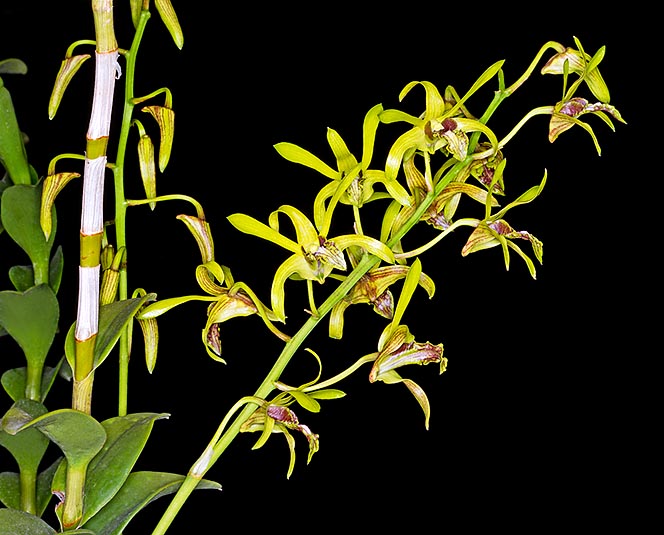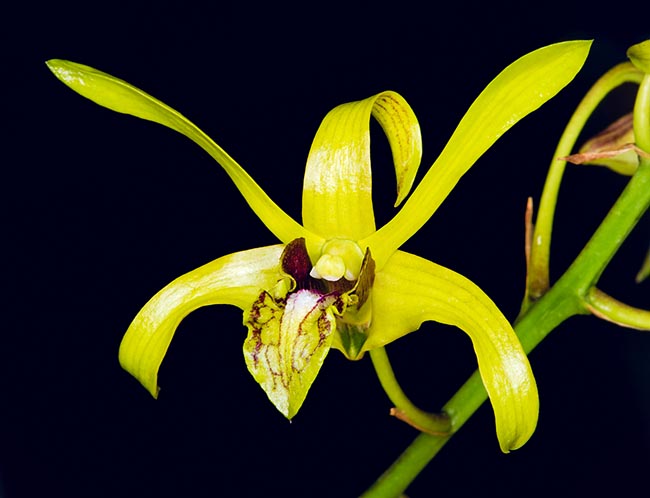Family : Orchidaceae

Text © Pietro Puccio

English translation by Mario Beltramini

Dendrobium calophyllum is an epiphyte at home in Java, Moluccas and Lesser Sunda Islands © Giuseppe Mazza
The name of the genus is the combination of the Greek substantives “δένδρον” (dendron) = tree and “βίος” (bios) = life, with reference to the numerous species of the genus living on the trees; the name of the species is the combination of the Greek adjective “καλός” (kalόs) = beautiful and of the substantive “φύλλον” (phyllon) = leaf, with obvious reference.
The Dendrobium calophyllum Rchb.f. (1870) is an epiphytic species with cylindrical pseudobulbs slightly enlarged near the base, 30-50 cm long, with ovate to oblong leaves, alternate, dstichouos, coriaceous, of intense green colour. Racemose inflorescences from the upper nodes, up to 20 cm long, carrying flowers of about 5 cm of diameter with lanceolate sepals of yellowish green colour, retroflexed, the lateral ones, merged at the base of the column, form a sort of spur (mentum), spatulate petals with pointed apex of the same colour as the sepals, whitish trilobed labellum run by violaceous venations, with erect lateral lobes on the sides of the column and oblong central lobe with pointed apex.
It reproduces by seed, in vitro, and division, to be done at the time of the vegetative restart, with each section provided of at least 3-4 pseudbulbs.

Little cultivated species with attractive flowers lasting even 2 months © Giuseppe Mazza
The waterings must be regular and abundant during the vegetatve period, but allowing the substratum to dry up before giving water again, spaced in winter till the vegetative restart. For the waterings and the nebulisations, is to be used rain water, from reverse osmosis or demineralised; the fertilizations, duly distributed in way to avoid salts accumulation, are to be done during the vegetative period, preferably with hydrosoluble balanced products, with microelements, at ¼ of the dosage suggested on the package.
It can be mounted on bark, trunks, rafts of cork or of arborescent ferns roots, or cultivated in little deep pots or baskets with very draining and aerated compost, which may be formed by medium sliced bark fragments with possible addition of inerts in order to improve the drainage; the repottings are to be done, when necessary, by the vegetative restart.
The species is listed in the appendix II of the CITES (species whose trade is internationally ruled).
Synonyms: Dendrobium rimannii Rchb.f. (1882); Callista calophylla (Rchb.f.) Kuntze (1891); Durabaculum calophyllum (Rchb.f.) M.A.Clem. & D.L.Jones (2002).
→ For general notions about ORCHIDACEAE please click here.
